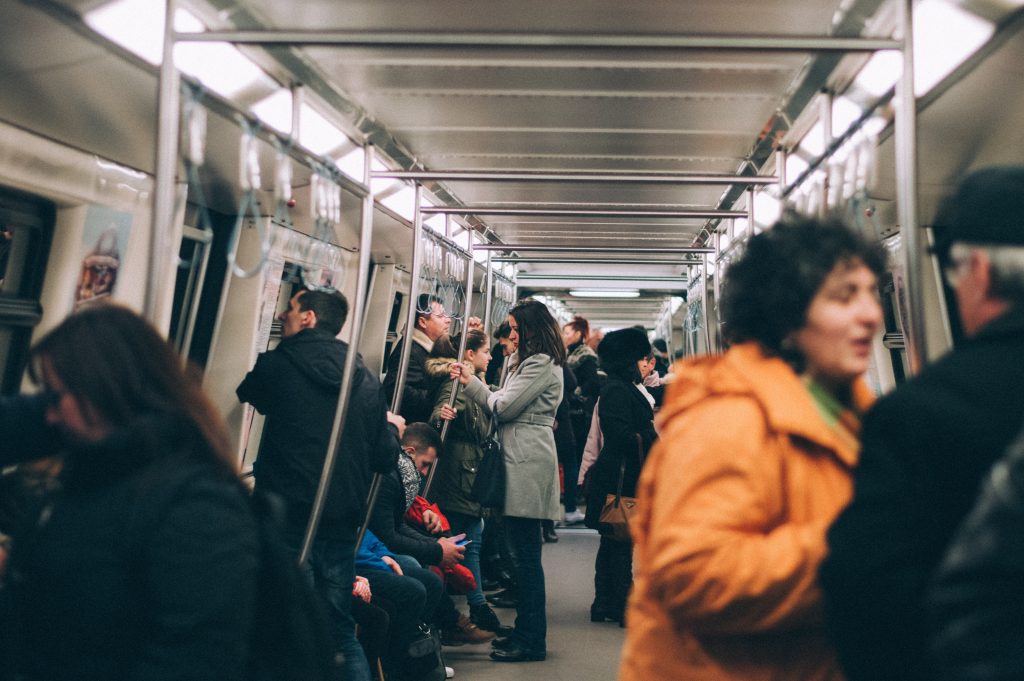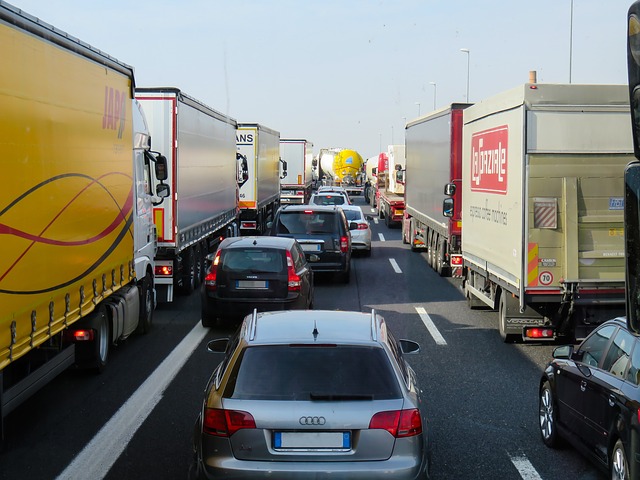Remote Work doesn’t just benefit you, the worker. Or you, the manager (from the greater productivity your workers gain). It also benefits something you both use every day.
Your environment.
How? By not contributing to environment-damaging conditions—when commuting.
Think about this. In any given major city or large metro area, what happens every workday? The Commute. Lots of people in cars, subway trains, and buses. Millions of bodies clogging up transportation routes at two (sometimes 3) times of the day.
Every vehicle filling the air with smog, heat, and soot.
Let’s see how Remote Work and commuting work together. You’ll see pretty quickly that even a small amount of Remote Work has a notable effect on the local environment…benefiting everyone who lives there.
Commuting Exposes You (and Everyone Else) to More Pollution Than Ever
According to StatisticsBrain, over 128 million people commute every day in the U.S. The majority (75%) drive their own car, going between 1-10 miles one-way. The average commute is about 25 minutes.
(Speaking as someone in the San Francisco Bay Area, I can confidently say…we commute on average FAR longer than 25 minutes. It’s taken me 45 minutes to go 3 miles, more than once!)

That’s definitely not a BART train. There’s way too much space open.
Photo by Adelin Preda on Unsplash
Now, let’s broaden our perspective a little. What ELSE happens as a result of all those vehicles moving back and forth?
- Air pollution.
- Lots of fuel/energy use.
- Each person loses time in traffic/delays.
- Stress.
All serious problems. More so now than ever before.
In July 2017, just days before I wrote this, Duke University published a study on in-car pollution levels for commuters. They found that commuting drivers breathed in twice as many pollutants as sensors checking the air from the sides of the road. The kind of pollutants that not only make you cough, but can contribute to heart disease and cancer.
The study measured air in Atlanta traffic. But I’ll bet it’s just as bad, if not worse, over here on Silicon Valley’s clogged highways.
How Remote Work Saves the Planet! (Or at least improves your health.)
Just by commuting, you’re causing environmental damage, wasting time, and actually hurting yourself. 5 days a week, (nearly) 52 weeks a year, every year.
“Yeah, it’s not good for the planet. But what can we do?”
Simple. We can work remotely.
Imagine that same big city/metro area, with a large number of local businesses switching to Remote Work strategies. It wouldn’t affect ALL jobs (can’t telecommute to a construction site…yet). But even a 10% drop in people commuting could yield incredible improvements.
- Better/lighter/faster traffic (I’m sure you’d appreciate that!)
- Hours regained every week
- Higher productivity from said regained time
- Reduced air pollution
- Lower stress levels
- Happier workforce
- Lower fuel/energy costs
- More flexible business hours
- Improved health for everyone!
Let’s gather some statistics to back these up. Here in the Bay Area we have a “Bike to Work” Day in May. They list the environmental benefits of such on this page:
Environmental Benefits – Bike to Work Day
According to their statistics, a mid-size car generates 1.3 tons of CO2 commuting 5 days a week for 1 year. Now, according to BayAreaCensus.gov, we had 2,674,000 people driving to work in 2010. I will round up to 3,000,000 for present day.
3 Million Cars x 1.3 Tons of CO2 = 3.9 million tons of CO2 dumped in the air. Every year. Just in one metro area. Multiply that by over 10 metro areas…yeah. That’s BAD for everybody.
If 10% of those workers telecommuted, it would stop 390,000 tons of CO2 from billowing up into the air.
Air you and I breathe each day.
Plus, you have time saved. Not just for telecommuters not driving to/from work, but for everyone else too. 10% of 3 million cars is 300,000 cars. What would happen to the people still commuting if we removed that many cars from daily traffic?
300,000 cars removed gives us 2,700,000 cars still commuting in the Bay Area. This Texas A&M study says that 148,000 person-hours are lost in traffic congestion for the San Francisco-Oakland area. A 10% reduction gives us 14,800 person-hours back. Divide that by 2,700,000 and you get…
32 seconds.
Okay, so a 32-second time savings on your commute isn’t much. But that’s with only 10% of commuters shifting to Remote Work. Imagine if we went to 20%. Or 50%.
You’re looking at huge pollution reductions, as well as more & more time saved for people who still commute.
Sounds like a good way to help prevent more heart disease and stress, doesn’t it? It sure does to me.

I have to say, that’s pretty smooth traffic for the Golden Gate!
Photo by Freddie Collins on Unsplash
Remote Work Helps Worker Productivity, Traffic, AND the Environment
The tremendous rush of commuting contributes to pollution and stress, every day. Helping keep the air clean and stress low is easily doable. All it takes is the decision to use a Remote Work approach.
If you use this “environmental benefit” argument to request Remote Work, please comment on the experience! I’d love to hear how well it works (and if not, what does!).
